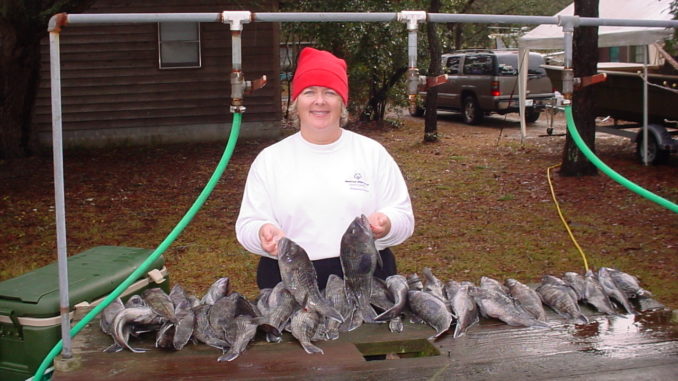
MOREHEAD CITY – North Carolina’s coastal and ocean fisheries remained relatively stable this year, according to the state’s annual stock status report, with striped mullet being the bright spot, as the stock was upgraded from recovering to viable. While the striped mullet meets all the criteria for a viable stock, fisheries managers continue to closely monitor mullet because market demand for the fish’s roe causes commercial fishermen to target females, potentially reducing the stock’s ability to reproduce.
The N.C. Divison of Marine Fisheries’ annual stock status report evaluates the health of state’s important coastal fisheries, spotlighting successes, as well as areas of concern. Of the 40 stocks listed, 18 fall into the viable and recovering categories, eight are listed as concerned, seven are overfished, and seven are unknown. The N.C. Marine Fisheries Commission uses this report to decide priority development of the state’s fishery management plans.
In addition to the change for stiped mullet, weakfish were moved from overfished to conerned. According to DMF’s Dr. Louis Daniel, “Weakfish continue to be a special species to watch with significant declines in commercial landings over the last several years.” Daniel explained the Atlantic States Marine Fisheries Commission will be considering measures to address the declining catches when they meet in August.
To determine the status of North Carolina fisheries, the DMF collects data and analyzes long-term trends in the length, weight, age, catch, and fishing effort for each stock. For many stocks it is also possible to evaluate the total weight of the fish in a stock that are old enough to spawn, the number of juvenile or immature fish, fishing mortality, natural mortality, migration, size and age at maturity, regulatory impacts and bycatch.
Fish and shellfish stocks considered viable are Atlantic croaker, black sea bass north of Cape Hatteras, striped bass in the Albemarle Sound and the ocean, dolphin, gag, king and Spanish mackerel, Atlantic menhaden, spot, spotted seatrout (speckled trout), striped mullet, and shrimp.
Recovering stocks include bluefish, monkfish, red drum, scup, and sharks.
Stocks listed as concerned include yellow perch, reef fish, American shad, summer flounder, weakfish, bay scallops, oysters and blue crabs.
Black sea bass south of Cape Hatteras, striped bass (in waters other than the ocean, Albemarle and Roanoke sounds), southern flounder, river herring in the Albemarle Sound, spiny dogfish, Atlantic sturgeon, tautog and are listed as overfished. In North Carolina, all overfished stocks either have regulations in place, or proposed regulations being developed, to stop overfishing and allow the populations to rebuild. The rebuilding process can take many years, especially for long-lived species. Even if a species is recovering, it stays in the overfished category until a consistent recovery trend is evident.
The DMF does not have sufficient data to conduct appropriate assessments on the status of some stocks. These stocks are listed as unknown and include catfishes, American eel, river herring outside of Albemarle Sound, kingfishes (sea mullet), white perch, hickory shad and hard clams. The DMF is collecting the necessary assessment information for these important fisheries and will be moving many of these stocks into the appropriate categories over the next few years.
Visit the DMF’s Web site at: http://www.ncdmf.net/stocks/index.html to view the new stock status report, along with species profiles and a glossary of fisheries terms.
For more information, please contact Dr. Louis Daniel at louis.daniel@ncmail.net or by calling 252-726-7021 or 800-682-2632.



Be the first to comment